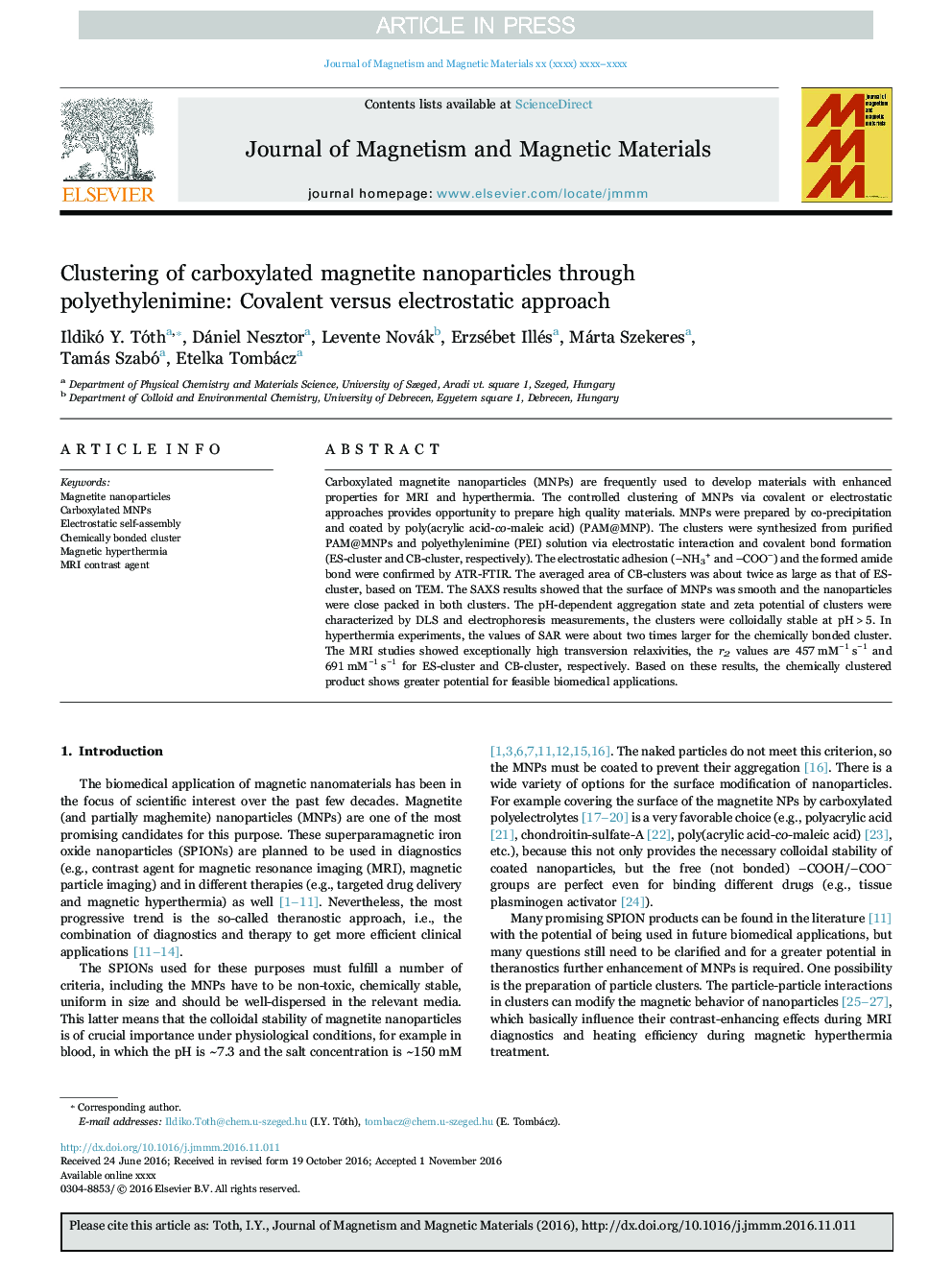| Article ID | Journal | Published Year | Pages | File Type |
|---|---|---|---|---|
| 5491194 | Journal of Magnetism and Magnetic Materials | 2017 | 9 Pages |
Abstract
Carboxylated magnetite nanoparticles (MNPs) are frequently used to develop materials with enhanced properties for MRI and hyperthermia. The controlled clustering of MNPs via covalent or electrostatic approaches provides opportunity to prepare high quality materials. MNPs were prepared by co-precipitation and coated by poly(acrylic acid-co-maleic acid) (PAM@MNP). The clusters were synthesized from purified PAM@MNPs and polyethylenimine (PEI) solution via electrostatic interaction and covalent bond formation (ES-cluster and CB-cluster, respectively). The electrostatic adhesion (-NH3+ and -COO-) and the formed amide bond were confirmed by ATR-FTIR. The averaged area of CB-clusters was about twice as large as that of ES-cluster, based on TEM. The SAXS results showed that the surface of MNPs was smooth and the nanoparticles were close packed in both clusters. The pH-dependent aggregation state and zeta potential of clusters were characterized by DLS and electrophoresis measurements, the clusters were colloidally stable at pH>5. In hyperthermia experiments, the values of SAR were about two times larger for the chemically bonded cluster. The MRI studies showed exceptionally high transversion relaxivities, the r2 values are 457Â mMâ1Â sâ1 and 691Â mMâ1Â sâ1 for ES-cluster and CB-cluster, respectively. Based on these results, the chemically clustered product shows greater potential for feasible biomedical applications.
Related Topics
Physical Sciences and Engineering
Physics and Astronomy
Condensed Matter Physics
Authors
Ildikó Y. Tóth, Dániel Nesztor, Levente Novák, Erzsébet Illés, Márta Szekeres, Tamás Szabó, Etelka Tombácz,
